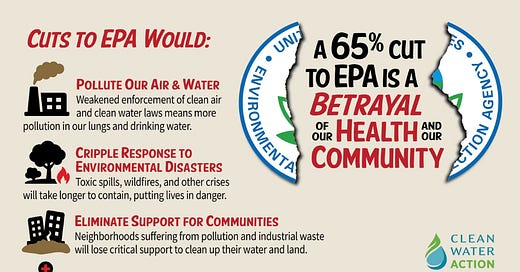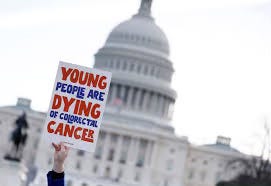🧪 Cutting Research. Costing Lives.
"Cancer shouldn't be political."— Natalie Phelps, patient facing treatment delays due to NIH staffing cuts.
This week, the federal government released its latest grants report. Buried in bureaucratic language was another wave of science funding cuts. But behind the line items are real consequences: canceled research projects, laid-off scientists, and the quiet erosion of our public health infrastructure.
At the same time, HHS Secretary Robert F. Kennedy Jr. insists that “life-saving research has not been affected.” That’s not just misleading—it’s demonstrably false.
Just this week, critical HIV vaccine research at Duke University and Scripps was defunded. At NIOSH, the CDC agency tasked with protecting workers from toxic exposures, staff are being laid off and rehired into stripped-down roles—if they’re rehired at all. According to WIRED, entire teams have vanished, leaving behind thousands of biological samples, human urine, rodent organs, even tissue cultures, now at risk of degradation due to lack of proper oversight.
Meanwhile, Grants.us estimates that as of this week, science program cancellations under the Trump administration have contributed to over 100,000 adult and 200,000 child deaths globally—due to otherwise treatable and preventable conditions like HIV, tuberculosis, and malnutrition.
They're not just cutting budgets. They're cutting lives short.
🧬 NIH Cuts: Research in Crisis
The National Institutes of Health (NIH) has seen historic cuts. At institutions like Duke, Scripps, and the University of Colorado Anschutz Medical Campus where $350 million in NIH grants supported over 1,000 clinical trials, critical funding is evaporating. This jeopardizes care for more than 2 million patients annually (CBS News).
Nationally, more than 16,000 NIH grant applications have stalled. 42 study sections and advisory council panels were canceled in a single week. The result? A $1 billion delay in funding disbursement compared to the same period last year (AcademyHealth).
🌍 Environmental Protection Gutted
The Environmental Protection Agency (EPA) faces a proposed 65% budget cut. If passed, it would all but eliminate the agency’s ability to monitor pollution and respond to public health hazards. The impacts would be especially severe for children and the elderly (Clean Water Action).
The EPA’s emergency response and pollution monitoring units would be among the hardest hit leaving contaminated water supplies, air pollution, and toxic sites dangerously unchecked.
🧒 Children at Risk
A new report from the MAHA Commission, led by Secretary Kennedy, paints a stark picture: American children are being exposed to PFAS (“forever chemicals”), lead, mercury, and other neurotoxins at levels known to impair brain development and long-term health. But while the urgency is real, the data used in the report is flawed.
At least seven of the 522 studies cited in the MAHA report either don’t exist or were misrepresented, according to investigations by Reuters, AP, and The Washington Post. That raises serious questions about scientific integrity at the highest levels of The Department of Health and Human Services.
🧪 NIOSH: A Quiet Collapse
At NIOSH’s Morgantown, West Virginia lab, two-thirds of staff were recently placed on administrative leave or laid off. These scientists were responsible for protecting U.S. workers from harmful exposures to toxins like asbestos, diesel, and synthetic chemicals. Now, they’re gone.
What’s worse, thousands of irreplaceable biological samples are at risk. Stored at sub-zero temperatures, these samples include decades of workplace exposure data, vital for studying cancer risk, neurodegenerative diseases, and reproductive harm. Without trained personnel to manage them, they could be lost forever (WIRED).
📉 Economies on the Line
The ripple effects are economic, too. In rural areas like Rockingham County, Virginia, and Birmingham, Alabama, research dollars from the NIH aren’t abstract—they support jobs, hospitals, and entire economies. The University of Alabama at Birmingham received over $334 million in NIH funding last year. Cuts could trigger layoffs and a local recession (BizJournals).
The Truth
Despite mounting evidence, the administration insists everything is fine. But the data and the stories, tell a different truth.
We’re heading in a direction where the U.S. is no longer a global leader in science, safety, and public health.
🧾 Further Reading:
Mindi Messmer, MS, PG, CG is an environmental and public health scientist and author of Female Disruptors: Stories of Mighty Female Scientists. The book is available on Amazon, Barnes & Noble and through your local bookstore.






My Mold & Corruption publication might be of interest to you